
Panama City
11. May: Breakfast is included in the room price and the buffet is opulent enough. They even have a table with Japanese breakfast specialties. We're not sure if the unrest has calmed down, so we take a taxi to Plaza de Cinco Mayo' and plan to walk down Avenida Central to San Filipe, the old, historic part of Panama City. Along Avenida Central I hope to find a DV-Cassette for my camera. The taxi driver says the situation has calmed down and there will be a demonstration at 17:00 at Plaza de Cinco Mayo.
Along Avenida Central many shops are closed yet, and those electronic shops which are open don't have DV-tapes but rather analog Video-8 and HI-8 ones. Slowly, the electronic shops taper off and I'm losing hope. We see a large supermarket and I decide to go in to check. We're not allowed in with our small rucksacks, so I decide to go in alone and Annewien waits near the entrance.
At the electronics department, they actually DO have DV-tapes (amazing!) but only one 60 minute and a couple of 30-minutes. The prices are high but payable (11$, 9$), so I get the 60 min and a 30 min. They have Salsa CD's for 11$, great! But I don't buy any, since Annewien is waiting for me downstairs. I get a bottle of water and meet Annewien, who says a guy had been following us and was acting suspicious, but was gone now.
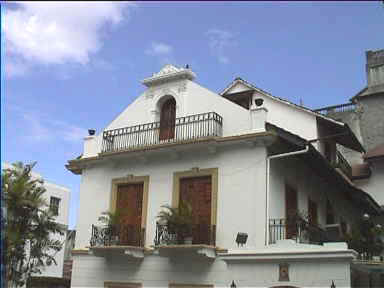 |
 |
|
|
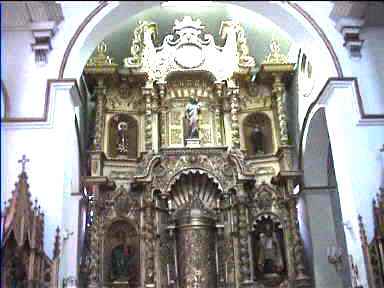 |
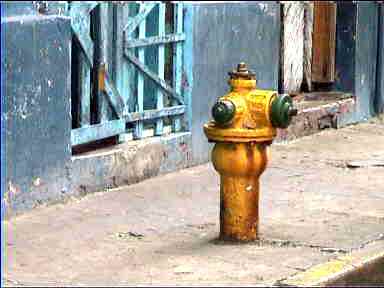 |
|
|
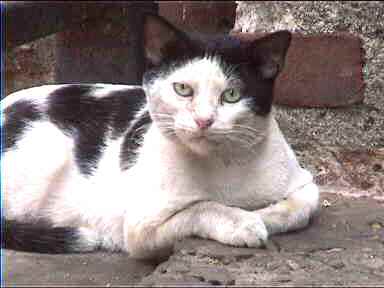 |
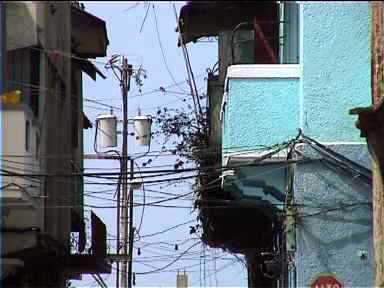 |
|
|
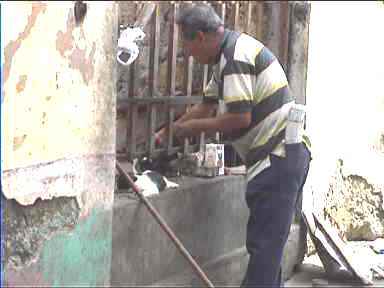 |
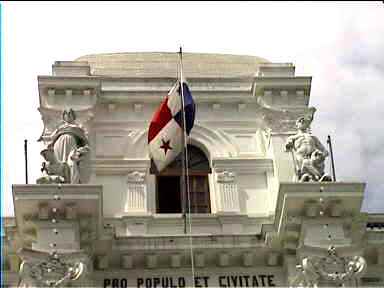 |
|
|
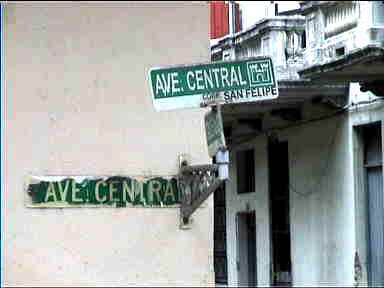 |
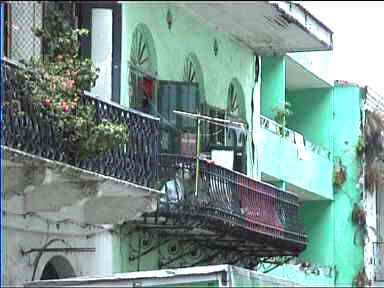 |
|
|
We walk to the historic part of town, and we are a bit jittery about robberies. Part of Casco Viejo / San Filipe are unsafe, and there is unrest in the city, so we will stick to the main roads. We walk along the tour recommended by LP, which is nice, and then see the new Canal Museum. It is absolutely freezing inside, and although Annewien doesn't really want to see it, we do so anyway. The exhibits are nice although everything is written in Spanish.
Once we are outside again, two policemen on bicycles hold us up and want to guide us around. They take us to a house not indicated in our guide book, and we go in. It has been restored and we're not allowed to take any pictures. I'm bored with these guys following us and not letting us in peace. At Plaza Bolivar I shake their hands, thank them and say goodbye. That does the trick and they're gone.
We walk on till the end of Casco Viejo to the Canal Monument and then back to the presidential offices. We are stopped by Police at a checkpoint but are it seems tourists are allowed on, rucksacks and all, to see the presidential house. I'm even allowed to take pictures. We decide to walk back, we've been warned by the police not to enter the harbour area, so we walk across back to Avenida Central. There, we have lunch at a Kentucky Fried Chicken look-alike, except that they have local Panamanian menus as well. I settle for Chicken with rice.
 |
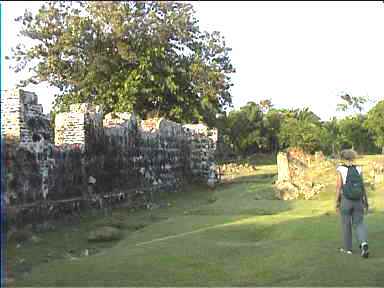 |
|
|
We then take a Taxi to the tourist office, which is quite far away. The taxi driver has some problems finding it, but it works out in the end. It is a small office in a large Convention Centre, with a young girl helping us to find good places to see in Panama City. She's very enthusiastic, but doesn't know very much yet, there is someone else there who helps her. We get a number of tips anyway. We take the same taxi on to Panama Viejo (old Panama City, the oldest city on the Pacific side of the Isthmus), which consists of restored ruins. There is a so-so handicrafts market there, where I buy a small frog and a lizard made out of Semilla or Tagua*, which is a very hard palm nut. I also buy a small hand-painted Panamanian Coke glass, and Annewien gets some mats. Bargaining works!
 |
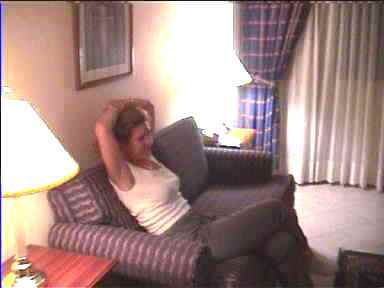 |
|
|
We then decide to try to book a Canal Trip for the next day. We find a coin booth and I start. There are just 2 or 3 agents offering a Canal Transit. Ecotours seems to make the best offer and the guy on the other end seems quite competent. They have the option of a 45$ trip without entering any locks, just sailing in the canal, and a 90$ trip with a transit through 2 of the 3 sets of locks and sailing till the Gaillard Cut. We discuss which option we'd like and we book the Canal Transit trip for the next day. We are lucky to have gotten the booking since it was past 17:00 and all offices were winding down for the day.
We then walk through the Panama Viejo ruins, which have a hedge around them, the gate is closed but seeing people inside just hop over the hedge to be inside. The ruins are partially restored and in good shape. The people inside are mostly lovers walking slowly or sitting to be away from the crowd. There seem to be millions of birds along the coast (Pacific), and it's interesting to watch how then walk and fly in such a coordinated fashion. My camera is acting very strangely and not reacting to my pressing it's controls. I later think it is a combination of heat and humidity, because it recovers subsequently in our a/c hotel suite.
We take a taxi to 'Via Espana', which is a large shopping area near the University. It's also just next to our hotel as well. The first electronic shop I see has a DV camera in the window and they have DV cassettes as well, so I buy one for 17$. Then we're off to KFC for dinner and then find a place to check our e-mail. It is freezing both in KFC and in the Internet cafñ and I guess it is on this day that I catch the cold, which would break out two days later in Caracas. Annewien asks the Internet guys if there is any place to Salsa and they recommend the Marriott.
After changing clothes in our room, we walk to the Marriott, and they do have live Salsa in their 'Champions' Club'. There are many locals, the dancing is so-so, none of them is excellent. The band is mediocre too. It is interesting to see the local women all extremely dressed up. We walk back to our room and I begin to feel that I'm getting a cold.
Continue to 12.5 The Panama Canal, Panama City to Caracas (Venezuela)
* Tagua/tñgwñ, fruit of the ivory-nut palm (Phytelephas macrocarpa), which flourishes in tropical America from Paraguay to Panama. The female palms bear large woody, burr-like fruits, each containing several seeds about the size of hen's eggs. The immature seeds are gelatinous and edible. These are the ivory nuts, white or cream in color and very hard. Known in the trade also as vegetable ivory, the substance is used as a substitute for ivory and has long been carved into curios for tourists. Its commercial value originated in the mid-19th cent. when African ivory began to grow scarce. Tagua became a commodity of considerable importance, great quantities being exported to the United States and Europe for the manufacture of buttons and other small articles. It was largely supplanted by less expensive synthetic materials, although the demand has been rising in recent years.